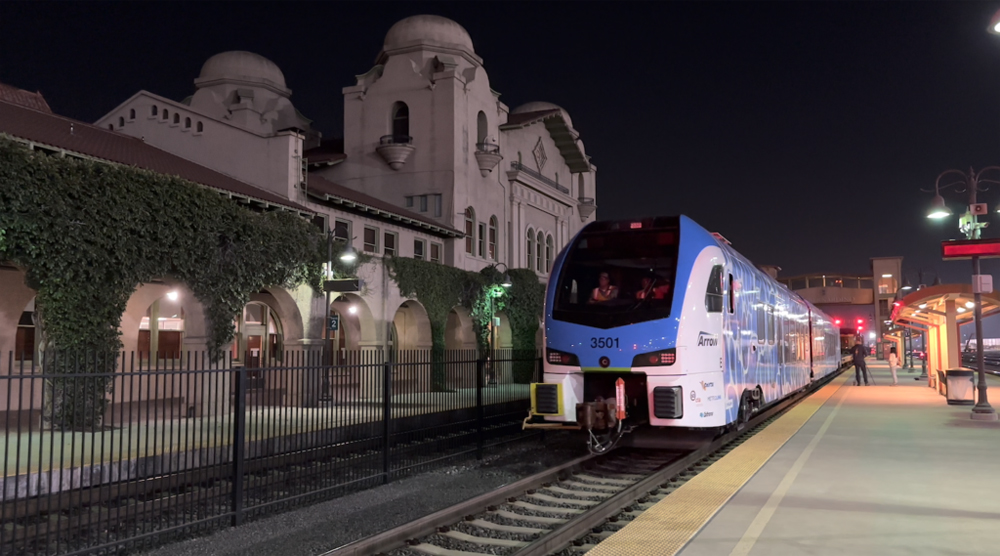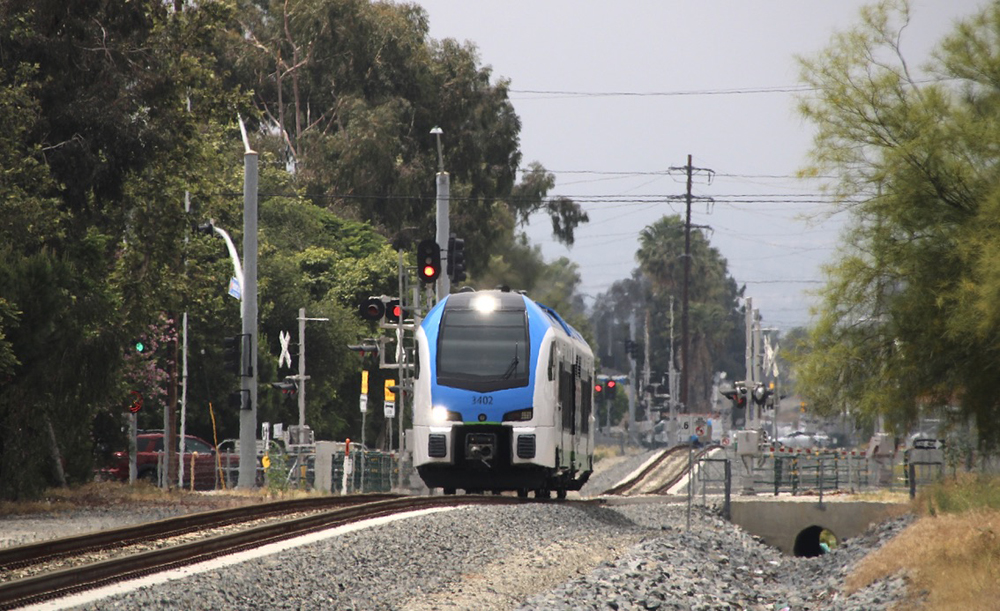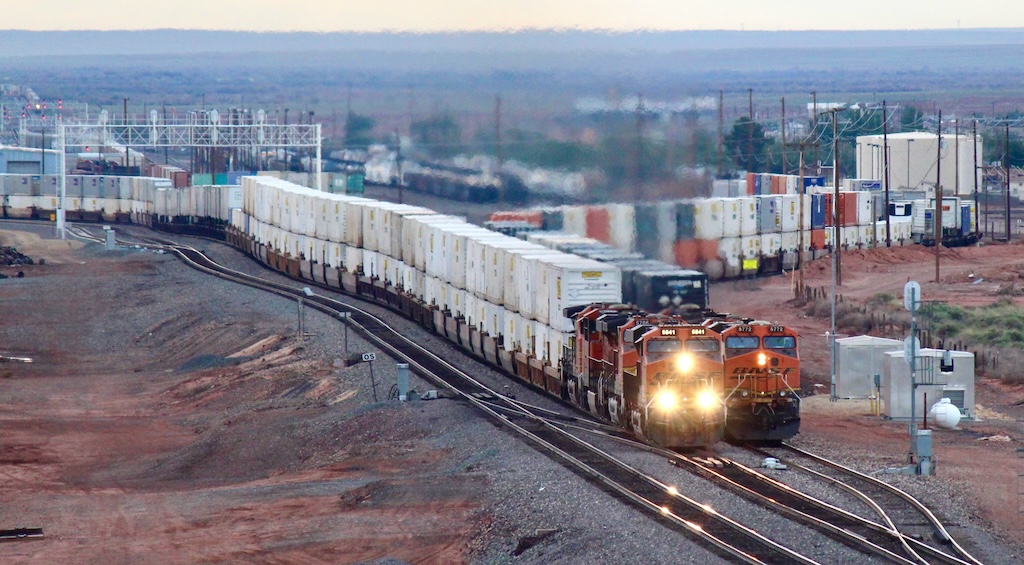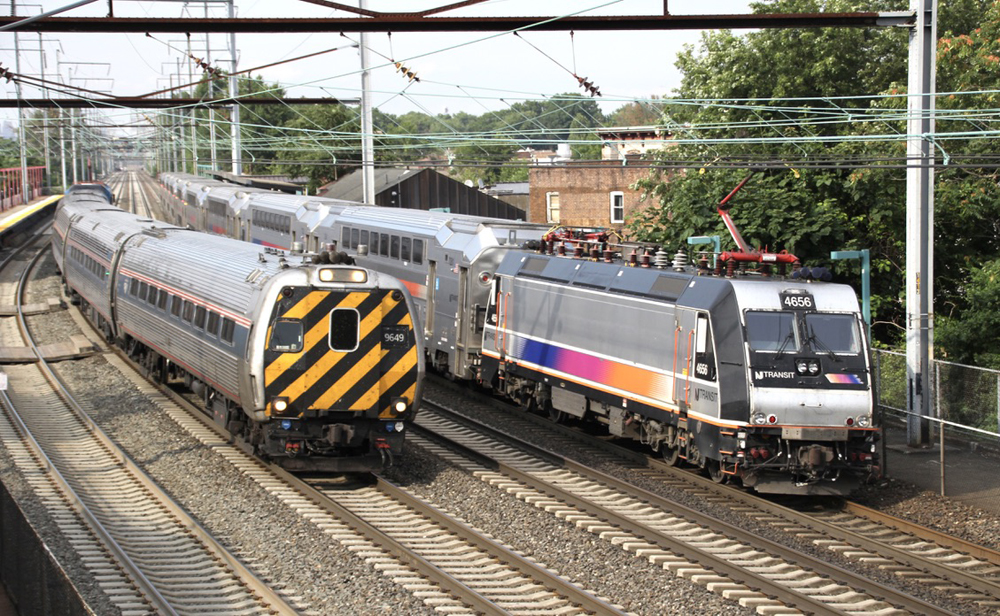
SAN BERNARDINO, Calif. — More than 20 months after it was unveiled in Berlin and nine months after its U.S. debut, the first Stadler hydrogen-fuel-cell powered FLIRT H2 trainset has arrived in San Bernardino, where it will operate on Southern California’s Arrow commuter rail line.
The first-of-its-kind trainset arrived on June 21, after leaving Pueblo, Colo., where it had been testing, on June 18, the San Bernardino County Transportation Authority said in a press release.
The zero-emission multiple-unit (ZEMU) trainset debuted at the InnoTrans trade fair in Berlin in September 2022, and after testing in Europe, arrived in Galveston, Texas, by ship in fall 2023. It began testing at the Transportation Technology Center in Pueblo, Colo., made an October public debut at the 2023 American Public Transportation Association Expo in Orlando, Fla., then returned to Pueblo. During its testing there, it was recognized by Guinness World Records officials for traveling more than 1,700 miles on without refueling or recharging [see “Stadler hydrogen trainset sets distance record,” Trains News Wire, March 25, 2024].
SBCTA President Ray Marquez said the train’s arrival “is a significant milestone recognizing years of strategic planning for a greener rail system and a commitment to innovative transportation solutions in San Bernardino County. I look forward to county residents and visitors riding ZEMU on the Arrow line in the coming months.”
The trainset will shortly begin its final phase of testing, including trips on the 9-mile Arrow route between San Bernardino and Redlands, Calif., and Metrolink system checks. The goal is for it to enter service later this year. It will join diesel-powered FLIRT trainsets already in service.
More information on the hydrogen trainset and the Arrow service is available here.















Though the train may be zero emission, making, transporting and storing hydrogen is not. A “big picture” analysis is more accurate at measuring true environmental benefits. However, to the “climate devotees”, a full accounting is less glamorous.
Alkaline electrolyzers create a large amount of potassium hydroxide aerosol in the hydrogen mix. It is expensive to remove via scrubbing and is very corrosive.
Steam-Methane Reformation uses LNG and is the most common form of hydrogen production. But it emits 6-9 tons of CO2 for every ton of hydrogen produced. Not such a great tradeoff.
Other forms include: Biomass gasification, Methane pyrolysis, Extracting underground hydrogen, and Thermochemical processes that use heat and chemical reactions to release hydrogen from organic materials.
As of 2023, less than 1% of hydrogen production is low-carbon, such as blue hydrogen, green hydrogen, or hydrogen produced from biomass.